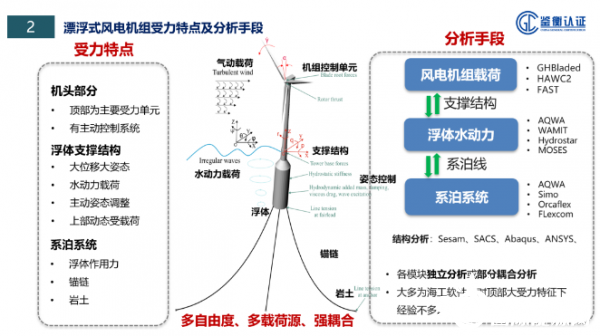

Wave_direction = - 0.5 * pi omega = 2 * pi / 9 anim = setup_animation( body, fs, omega = omega, wave_amplitude = 2, wave_direction = wave_direction)Īnim. Return animation if _name_ = '_main_':įs = cpt.

add_free_surface( fs, wave_amplitude * ( incoming_waves_elevation)) full_body, faces_motion = wave_amplitude * rao_faces_motion)Īnimation. # SET UP ANIMATION animation = Animation( loop_duration = 2 * pi / omega)Īnimation.
Wamit orcaflex 计算 free#
# COMPUTE FREE SURFACE ELEVATION # Compute the diffracted wave pattern incoming_waves_elevation = fs. sel( omega = omega, radiating_dof = dof). # Compute the motion of each face of the mesh for the animation rao_faces_motion = sum( dataset. rao( dataset, wave_direction = wave_direction) * radiation_results, diffraction_result = results dataset = cpt. Return boat def setup_animation( body, fs, omega, wave_amplitude, wave_direction) -> Animation:

add_dofs_labels_to_matrix( 1000 * I)īoat. # They need to be computed independently. # The computation of the RAO requires the values of the inertia matrix and the hydrostatic stiffness matrix. , We are using programming and data science approaches to. Our team consists of experts in hydrodynamics, structural analysis, hydro elasticity, general engineering and programming. 0.00000000e+00, - 0.00000000e+00, - 0.00000000e+00], entail 641 Follower:innen auf LinkedIn We design and analyze the next generation of ocean structures with help of innovative engineering processes We design and analyze the next generation of ocean structures. RectangularParallelepiped( size =( length, width, 2 * draft), resolution =( 20, 6, 5)) # boat = _file("boat_200.mar", file_format="mar", name="pirate ship") # boat.rotate_z(pi) length = 100 width = 30 draft = 4 boat = cpt. INFO, format = '%(levelname)-8s: %(message)s')ĭef generate_barge() -> cpt. Finally, a comparative study based on experimental and numerical results (WAMIT & OrcaFlex) was performed to confirm the performance reliability of the designed rotor.Import logging from pathlib import Path import numpy as np from numpy import pi import capytaine as cpt from capytaine. In addition, the viscous damping coefficient was calculated from the FDT result and fluid forces, obtained from WAMIT, are incorporated into the final response of the rotor.
Wamit orcaflex 计算 series#
The pitch response was extracted from the experimental time series in a periodic regular wave for two different wave heights (1 cm and 3 cm). Initially, a free decay test (FDT) was carried out to obtain the viscous damping coefficient. Then, an experimental investigation was conducted to assess the performance of the rotor motion based on the model scale in a two-dimensional (2D) wave tank. In the present study, the rotor was investigated using WAMIT (a program based on the linear potential flow theory in three-dimensional diffraction/radiation analyses) in the frequency domain and verified using OrcaFlex (design and analysis program of marine system) in the time domain. The asymmetric geometric shape of the duck makes it absorb energy efficiently. The rotor shape is designed such that the front part faces the direction of the incident wave, which forces it to bob up and down due to wave-induced water particle motion, whereas the rear part, which is mostly circular in shape, reflects no waves. Among the various wave power systems, Salter’s duck (rotor) is one of the most effective wave absorbers for extracting wave energy.


 0 kommentar(er)
0 kommentar(er)
